To brush or not to brush? Are bones good or bad for your dog? Are those special dental biscuits and chews worth it? What is that weird liquid, and does it actually DO anything?
The most common dental problems in adult dogs in my practice are periodontal disease (gum disease) and tooth fractures. Interestingly, dental cavities (tooth decay) are common in humans but rare in dogs. This is due to differences in the shape of the teeth, the type of food they eat and the pH of the saliva. If you don’t feed them lollies or sugary treats, it is really unlikely your dog will ever get a cavity!
Homecare is the ONLY thing that will slow down the progression of gum disease. Dental cleanings and extractions literally just clean up what disease is in the mouth at the time. They return the mouth to a pain-free and healthy state but without homecare, the disease will progress again afterwards.
The Role Of Home Care
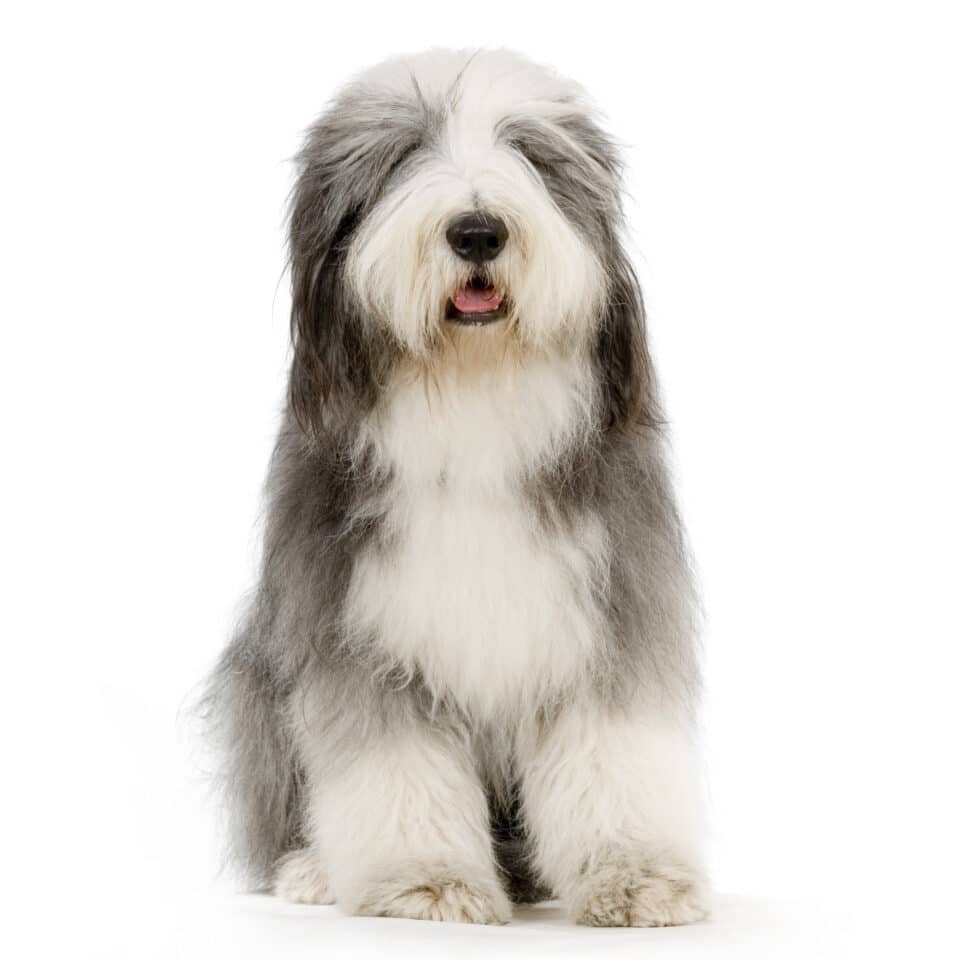
Effective home care means that:
- The time between dental cleanings will be longer
- There will be less gum disease, which means the chance of losing teeth is less
- The anaesthetic will be shorter, which is especially important for older pets.
- The cleaning will cost less.
Sounds simple enough, right?
The problem is the sheer amount of conflicting information on dental care in pets. Pet stores or supermarkets present a confusing array of products. Rows and rows of chews, foods, toys, chemical rinses, water additives, sprays, pastes, gels. New ones out all the time, each promising to fulfil your pet’s dental needs. How can anyone make sense of this without a veterinary expert on speed dial every time they go shopping?
Where Do We Start?
The easiest way to approach this is to look at the basic cause of the problem. Once we understand this, the solutions become pretty clear. Then, look at each product, think about how it works, and make your own mind up. Easy!
Let’s start with periodontal disease. Most people have heard it called gum disease or gingivitis. Plaque bacteria on the teeth cause gum inflammation. This is the filthy ‘scum’ layer that forms on the teeth, starting only hours after you brush them. If bacteria is left undisturbed (for example, if you forget to brush your teeth for a couple of days), it hardens into tartar.
Gums become red, puffy and swollen, and may ulcerate or bleed when rubbed if they have gingivitis.
Dogs don’t really complain though, they just get on with it (bless them). It’s a hidden disease, with the only sign (until the very end stage) being bad breath.
When your dog’s breath smells bad, you are smelling infection and pus accumulating around the teeth.
Gums and the bones supporting the teeth can recede and be destroyed by the bacteria on the teeth. Other complications occur as well:
- Constant showers of bacteria enter the bloodstream and spray the organs, including the liver, heart and kidneys.
- Eventually, the teeth fall out.
- In some cases, the jawbone may fracture before this happens
- Painful abscesses may form deep in the bone
- Holes may open up between the mouth and nose (oronasal fistula).
Periodontal disease is the most common disease in pet dogs in Australia, affecting 4 out of 5 adult dogs.
What Are Your Home Care Options?
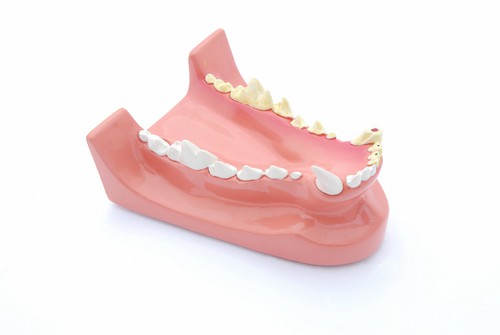
This article does not give a list of home care products, although some are mentioned as examples. I have no commercial association with any of the companies mentioned. Products vary from place to place and come and go. So, we’re going to look at how to assess different products. You can cut through some of the marketing hype and the old tales yourself.
To assess any method or product for plaque control, you should ask two questions – does it work, and is it safe?
Does It Work?
There are many products on the market that claim to have ‘dental benefits’ for dogs, however, if they don’t help to control plaque bacteria, they are not going to be effective in preventing periodontal disease – it’s that simple.
Making the breath smell fresh doesn’t matter if the bacteria are still there, doing their dirty work.
You need to either REMOVE the bacteria or KILL the bacteria, otherwise it is not going to work.
Some products (mainly diets) also work by making it harder for the plaque to harden into tartar which is somewhat helpful, but you still need to combine this with another method that will physically remove the plaque or it will not be effective. Some products work in both physical and chemical ways – a double whammy.
Is It Safe?
Even if a product is effective, it’s not much help if it is destroying the teeth at the same time.
There are chemicals that will kill bacteria and the teeth as well – thankfully, these are not usually for sale as dental products. I saw a dog with severely damaged teeth that had been cleaned with a common household cleaning product – there was no plaque present, and also no enamel 🙁
I also see so many cases of dental fractures due to dogs chewing inappropriate objects, and it is heartbreaking when dog owners have given them for the very purpose of helping their pet’s teeth.
The most common tooth fracture we see in dogs is a slab fracture of the upper carnassial tooth – this occurs when the dog bites down on a hard object (often a bone, stick, rock), and the whole side of the tooth breaks, flipping out and up.
Think of the teeth like scissors – the carnassial teeth in particular. Scissors can break if the dog bites hard enough on a bone; either the bone or the ‘scissors’ will break.
Okay, on to our options. I divide them into mechanical (removing the plaque) and chemical (killing the bacteria or stopping the plaque from hardening into tartar).
Mechanical Methods Of Removing Plaque
This comes in two main forms:
Toothbrushing
I know you’re rolling your eyes. Hear me out.
If your pet will allow it, tooth brushing is the most effective way to control plaque.
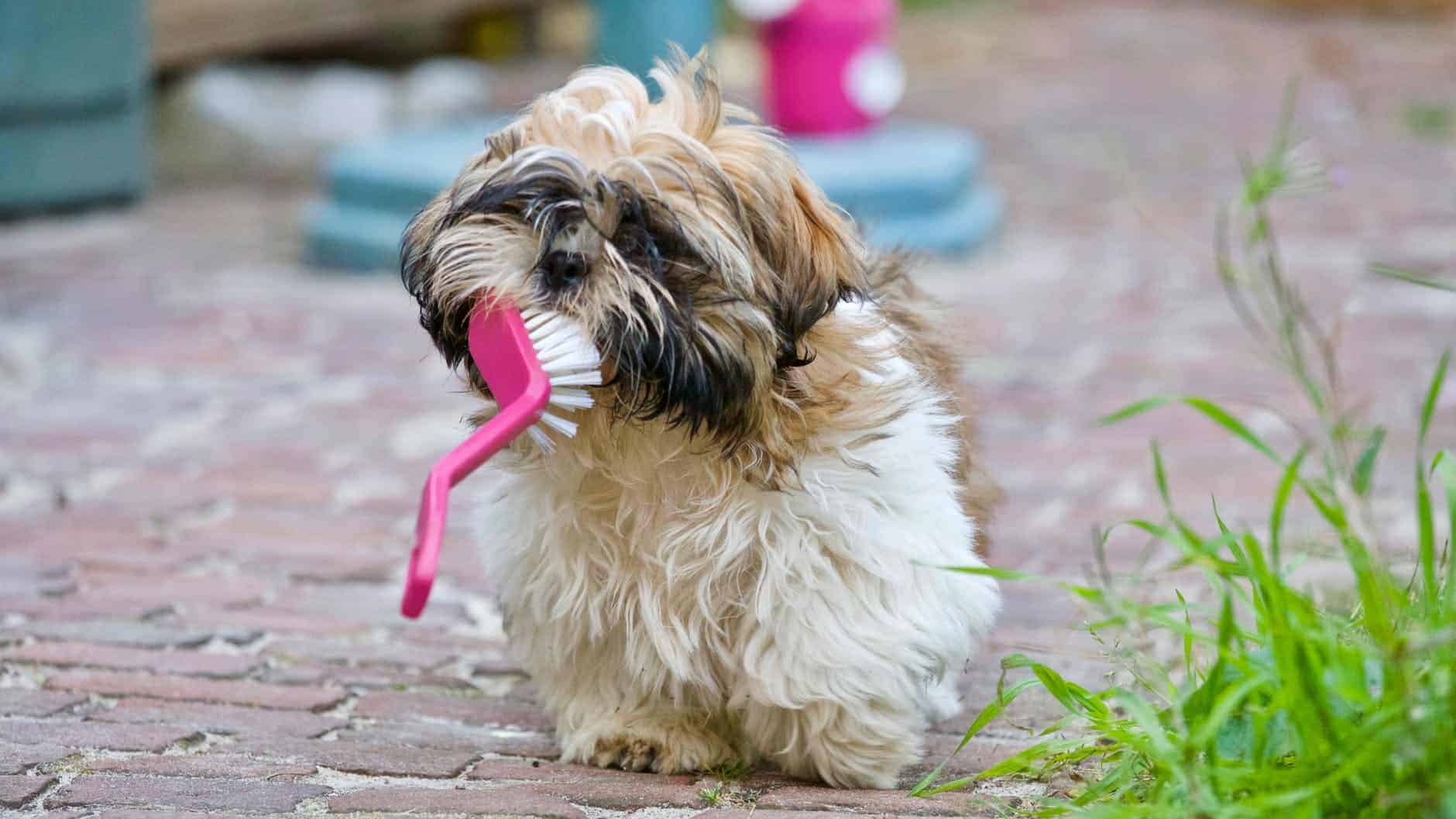
That’s why human dentists get us to do it! People underestimate how many dogs will accept (and even enjoy!). Introduce brushing slowly and associate it with a reward. You don’t have to brush (no judgment), but if you try, your dog might surprise you, and if it doesn’t work, you have nothing to lose (as long as you keep the video off YouTube, your dignity will stay intact).
Brushing disturbs the layer of plaque forming on the teeth before it can harden into tartar. Brushing should be done daily or every second day to stop plaque hardening into tartar.
Tooth Brushing Tips
Check out our information sheet on the ‘slow and sneaky method’ for brushing your pet’s teeth for handy hints on getting started (tooth brushing tips).
- Toothbrushes need to have soft bristles as we don’t want to cause damage or discomfort – some made specifically for dogs are fine, but others are too stiff.
- I often use human brushes with soft bristles (children’s brushes are good for smaller dogs).
- Training can be started with something delicious, such as peanut butter, pressed into the bristles (no sugar or salt).
- Using toothpaste designed for animals is important, as human toothpaste is not designed to be swallowed (and dogs are not good at rinsing and spitting!).
- Besides, in flavours such as chicken, beef and tuna, toothpaste can help make brushing a treat!
- Alternatively, oral antiseptics can be used (see below), or just water alone, especially if your dog doesn’t like the flavour, has food intolerances or is on a restricted diet — most of the benefit is actually from the brushing action.
- If they chew on the bristles, they are just flossing as well! Some dogs even like power toothbrushes, but make sure you label theirs as they don’t like to share with dirty humans.
It is very important to have your pet’s mouth examined by a vet before commencing a brushing program, as the presence of any existing disease may make the experience painful – you can then start safely once any disease is under control.
Chewing
Dogs love to chew, and this has the added benefit of helping to keep their teeth clean. Chewing has an abrasive action that helps remove plaque (think of it as physically wiping the tooth surface) – however it is important to offer something that is safe (not too small, hard or brittle) yet still effective.
Different dogs have different chewing behaviour, so what is safe and effective in one dog may be dangerous or ineffective in another.
Here are some important points:
- Most regular dry foods shatter when bitten. So, although regular dry foods are often touted as ‘good for teeth’, they don’t require any chewing.
- Many dogs don’t even bother chewing regular kibble, preferring to ‘inhale’ it!
- This goes for any food, diet, toys or chews – if a dog doesn’t spend time chewing, the chew won’t work.
- A chew treat that is too small for the dog is gone in a gulp. It won’t wipe the tooth surfaces.
- If your dog only chews it on the left side of his mouth, it won’t work on the right side.
- Just because it is a ‘natural’ diet, if it is cut into tiny pieces that don’t need chewing, it won’t clean the teeth.
- If the box says ‘chew toy with added dental benefits’ but there’s nothing for the teeth to rub against…you get the picture.
- There’s no magic to it.
My general rules for choosing a ‘tooth-safe’ chew toy or treat are that it should be flexible (you can bend it), not too hard (you can dent it with your fingernail) or it falls apart or crumbles as it is chewed.
Bear in mind that this does not rule out other potential issues such as choking or gastrointestinal obstruction. I’m not sure the perfect chew object exists for all dogs – if it does, I’d love to hear about it (my contact details are in the bio section of this article)!
You will need to experiment to find what works for your dog.
Commercial or non-commercial products, and edible or non-edible?
Commercial complete dental diets are available that are designed with larger kibble that has been designed to mechanically clean the teeth as it is chewed. Some of these are clinically proven to reduce plaque and tartar (examples include Hills T/D and Royal Canin Dental). As the choice of diet may be affected by other health issues, it is a good idea to get professional advice on this – the best place to start is your local vet hospital.
Commercial treats, chews and toys vary in quality and effectiveness, ranging from those with rigorous scientific studies behind them (Greenies, Oravet Dental Chews) to those that are less (or non-) evidence-based.
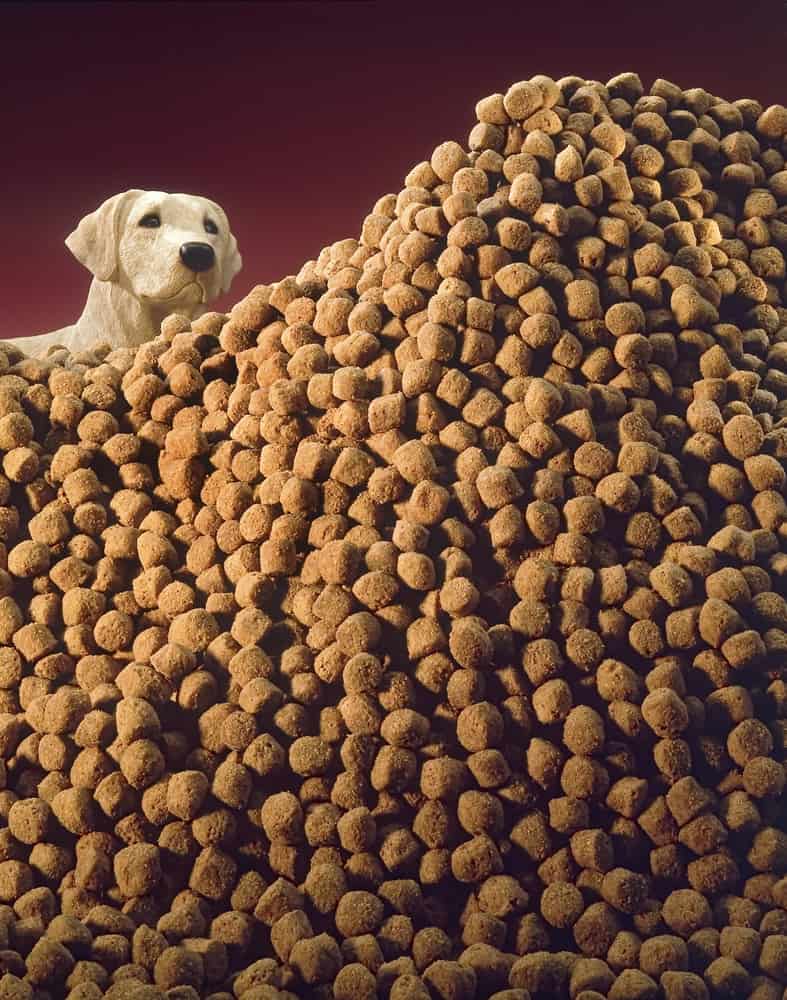
- Most studies are based on these edible chews being fed daily.
- Great caution needs to be exerted when purchasing chews and toys as there really is no control over what can be promoted as a dental chew.
- Hard chew toys and treats such as deer antlers, hooves and hard plastic bones are dangerous for teeth and most have no dental benefit as they do not have any significant mechanical cleaning action.
- It is worth going back to the basics – will it clean the surface of the teeth down to the gumline, and will it flex, dent or crumble as your dog chews on it?
Bones and Chewy Meats
Bones are a very popular natural chew treat in Australia and have the added benefit of providing enjoyment and boredom relief.
However they should be used with caution as there are some potential complications including tooth fractures and tooth root abscesses, gastrointestinal obstruction and perforation, and food poisoning (eg salmonella). Their effectiveness in controlling plaque is still controversial and even the experts remain divided on this topic.
If you choose to use bones as part of your dental care program, follow these rules:
- They need to have plenty of meat on them so there is something for the teeth to sink in and out of repeatedly, and you take them away once they have eaten the meat.
- Some dogs may chew bones for years and never have a problem, whereas others chew in such a manner that makes them highly prone to dental damage, and I see some dogs that break multiple teeth in succession.
- You should supervise your pet and remove any bones if concerned about their chewing behaviour.
Smaller dogs may also enjoy chewing on large pieces of meat without the bone, such as cheap cuts with sinewy, fibrous tissue (chuck steak, gravy beef, ox hearts). Look at the way your pet chews, and whether the surfaces of the teeth are being mechanically cleaned as they repeatedly move through the meat. I recommend human-grade meat as this is less likely to have issues with bacterial contamination, and advise hygienic handling.
Chemical Methods To Kill The Plaque
Oral antiseptic preparations come in many forms, including rinses, pastes, gels and water additives.
There are no regulations controlling the claims made on these products, and not only do you need an effective ingredient, but at the correct concentration, in the right place, and sometimes for the right amount of contact time. If a product seems too good to be true, it just might be.
Some chemicals can also have side effects in dogs that have different medical conditions, or even be toxic if not used correctly. If in doubt, talk with your vet about what is suitable for your pet.
Chlorhexidine
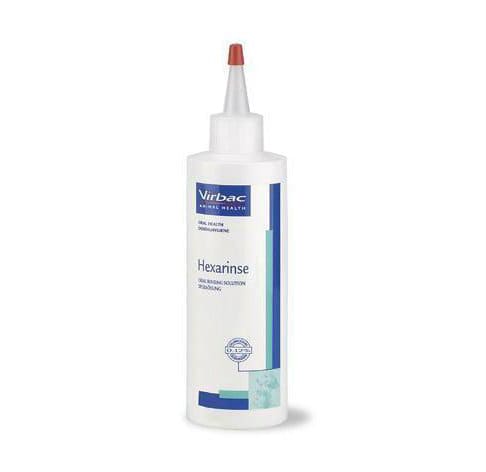
The gold standard oral antiseptic is chlorhexidine, which is a highly effective product for killing oral bacteria. I tend to reserve this for cases where inflammation is severe, as long-term use can lead to staining of the teeth, changes in taste perception, and an increased rate of calculus deposition.
Issues with bacterial resistance may also become an issue with widespread use, so there are arguments for limiting its use to those cases where it is truly warranted.
Other Chemicals
Some commercial diets and treats have chemical additives to slow the maturation of plaque into tartar, making it easier for mechanical methods to work. The most common ones are
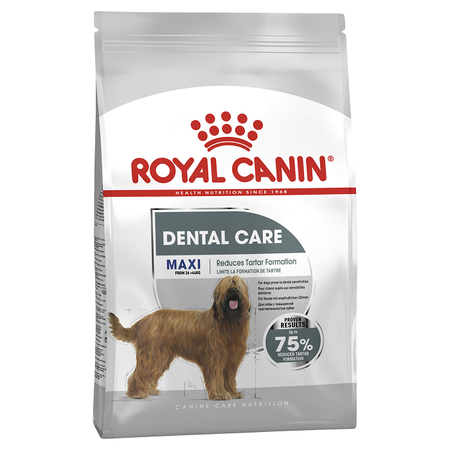
- Polyphosphates bind salivary calcium, making it unavailable for incorporation into the plaque biofilm. This can be in conjunction with the mechanical effect of kibble design (e.g. Royal Canin Dental) or a stand-alone feature (e.g. Eukanuba Dental Defense).
- So many other chemical products are available, and assessing their efficacy and safety is complicated. My best advice is to consult your vet before using these, especially if your pet has health issues.
Chemical products are, at best, an adjunct to mechanical plaque control. This is why your dentist doesn’t tell you to stop brushing and rinse with a mouthwash.
Putting It All Together
When choosing methods or products for your dog’s dental care, each situation is different – not all dogs are the same, not all people are the same. Doing something is better than doing nothing.
Some final points:
- Periodontal disease is the most common and hidden welfare issue in Australian dogs. Plaque control is your way of helping your dog avoid this.
- No one product or method is 100% effective – even if you do everything perfectly you cannot guarantee your dog will never need professional dental care under anaesthesia (people who brush and floss and use mouthwash still need to see their dentist regularly for scaling and polishing)
- Aim for at least one mechanical method, as physically removing the plaque is the best way of controlling it.
- Supplement this with chemical methods that make it easier to remove the plaque (by slowing the accumulation of bacteria or its rate of hardening into tartar).
- Professional veterinary dental treatment under anaesthesia is the ultimate mechanical method of plaque removal – what we are trying with our homecare is to space out the need for treatment and minimise what is required.
- Your veterinary hospital is the best place to get advice on dental care for your dog.


